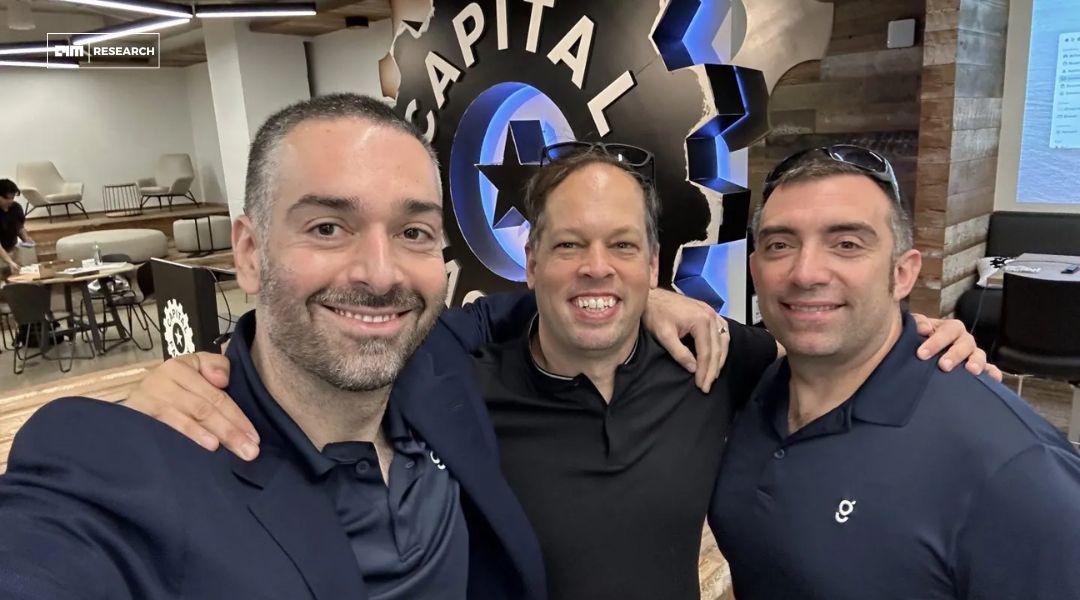
Breakout Founders Say Teams Struggle to Trust AI for Sales Engagement
- By Anshika Mathews
- Published on
They want AI that drives revenue. That’s exactly what we deliver.


Access to the right information at the right moment is critical for sales teams, yet most struggle to sift through vast amounts of data to find what truly matters. Every organization, regardless of industry, faces this challenge. While AI-driven sales solutions promise efficiency, many fall short due to rigid workflows, outdated insights, and disconnected data sources. That leads sales teams to be left with more noise than value, making meaningful engagement nearly impossible.
San Francisco-based Breakout, founded by ex-Googlers Sachin Gupta and Hitesh Aggarwal, is rethinking how AI fits into B2B sales. The startup has created an AI sales person who can handle early-stage customer conversations, answer product queries, and even provide live demos. Rather than waiting for a sales representative, Breakout’s AI quickly provides buyers with the information they require and guides them through the purchasing process.
Despite AI’s rapid advances in sectors like healthcare and finance, B2B sales remains frustratingly inefficient. Many AI-driven sales solutions fail due to rigid scripting, lack of real-time prospect data, and disjointed CRM integration. This leads to impersonal interactions that hinder rather than help the sales process.
AIM Research had an exclusive conversation with Breakout’s co-founders to understand the challenges that led them to build this AI-powered sales agent and their vision for the future of AI in B2B sales especially after their $3.25 million seed funding.
<iframe src=”https://www.linkedin.com/embed/feed/update/urn:li:share:7300909273155321856″ height=”1320″ width=”504″ frameborder=”0″ allowfullscreen=”” title=”Embedded post”></iframe>
Gupta, previously the founder of HackerEarth, a technical hiring platform used by over 1,000 companies, saw firsthand the difficulties of managing early-stage buyer engagement. “Once we reached product-market fit, inbound traffic became our primary go-to-market motion. We had thousands of visitors on our site, but 99% bounced off without meaningful engagement. We were serving multiple personas but only had a single homepage for all of them. Scaling human-led interactions wasn’t sustainable,” he explained.
Aggarwal, who spent over a decade building AI-driven products at Google and Citi, encountered the same inefficiencies at scale. “Even the largest companies with sophisticated sales teams struggled with manual processes and slow response times. We knew there had to be a better way to engage and qualify buyers without losing personalization.”
The modern B2B buying journey has fundamentally changed. Research suggests that over 70% of the process happens before a prospect even talks to sales. Buyers rely on company websites, third-party reviews, and comparison sites, often navigating a flood of information without personalized guidance. AI has the potential to bridge this gap, but most AI sales tools function more like glorified chatbots.
“Existing AI solutions follow scripted workflows, delivering robotic, generic responses. They also lack real-time data integration, which means they fail to tailor conversations based on a prospect’s specific needs, past behavior, or company details,” Gupta noted. “This results in minimal impact on the sales pipeline.”
Breakout’s approach is different. By integrating advanced generative AI with first-party data, product knowledge, and third-party intelligence, Breakout’s AI sales reps actively guide conversations. They don’t just respond; they ask qualifying questions, deliver instant demos, and personalize discussions to nudge buyers down the funnel. “We don’t want to replace sales reps; we want to ensure that human reps only spend time on the highest-value opportunities,” Gupta added.
One of the biggest fears among sales teams is that AI will replace them. “That’s not the case at all. Sales professionals thrive in relationship-building, complex negotiations, and closing deals—not in chasing unqualified leads or answering repetitive questions. AI should complement sales, handling the high-volume, repeatable tasks while seamlessly handing off high-intent leads to human reps,” Aggarwal explained.
Another misconception is that AI tools can’t manage nuanced conversations. “Many teams have used chatbots before and found them frustratingly limited. Breakout ensures that AI isn’t just answering questions but engaging prospects based on their persona, personalizing their experience, and gradually guiding them through the buying journey. Our AI sales reps act as real teammates, accelerating pipeline generation while maintaining a human-like experience.”
Breakout is already generating revenue, which is quite rare for an early-stage AI startup. “Right now, we’re focused on onboarding customers from our waitlist and proving our value in real sales environments,” Gupta shared. While additional funding may be considered for future expansion, the primary goal is sustainable growth and building a product that delivers real business impact.
Understanding that sales teams rely on a stack of tools, Breakout integrates with major CRMs like Salesforce and HubSpot, as well as newer platforms like Attio. It also connects with marketing automation tools like Marketo and communication channels like Slack and email. “We want Breakout to fit into existing workflows, not disrupt them. We will continue expanding our integration ecosystem based on customer needs,” Aggarwal confirmed.
Despite the promise of AI, marketing and sales teams are often skeptical of handing over lead engagement to an AI tool. “Many have tried AI-powered solutions before and been disappointed by their rigid, ineffective interactions,” Gupta acknowledged. “We’re overcoming this by making Breakout as effective and human-like as possible. Instead of forcing teams to change their processes, Breakout seamlessly integrates, handling repetitive, low-touch interactions while ensuring high-quality leads reach human reps.”
Ultimately, sales leaders don’t just want AI for the sake of AI. “They want AI that drives revenue. That’s exactly what we deliver,” Gupta concluded.
📣 Want to advertise in AIM Research? Book here >
Cypher 2024
21-22 Nov 2024, Santa Clara Convention Center, CA
A Vendor Briefing is a research tool for our industry analysts, and an opportunity for a vendor to present its products, services and business strategies to analysts who cover the vendor specifically or a related technology or market.
AIM Research encourages technology vendors and agencies to brief our team for PeMa Quadrants, when introducing a new product, changing a business model, or forming a partnership, merger, or acquisition.


